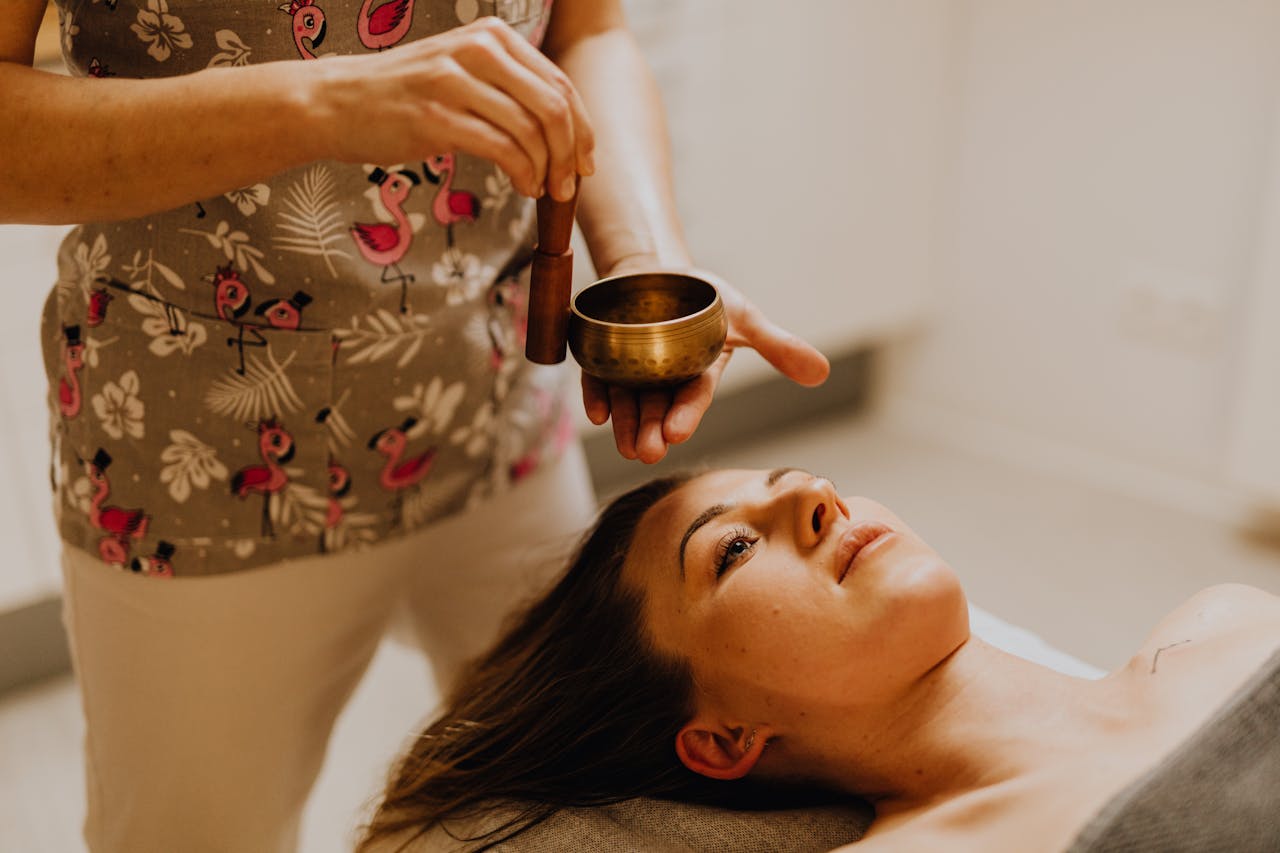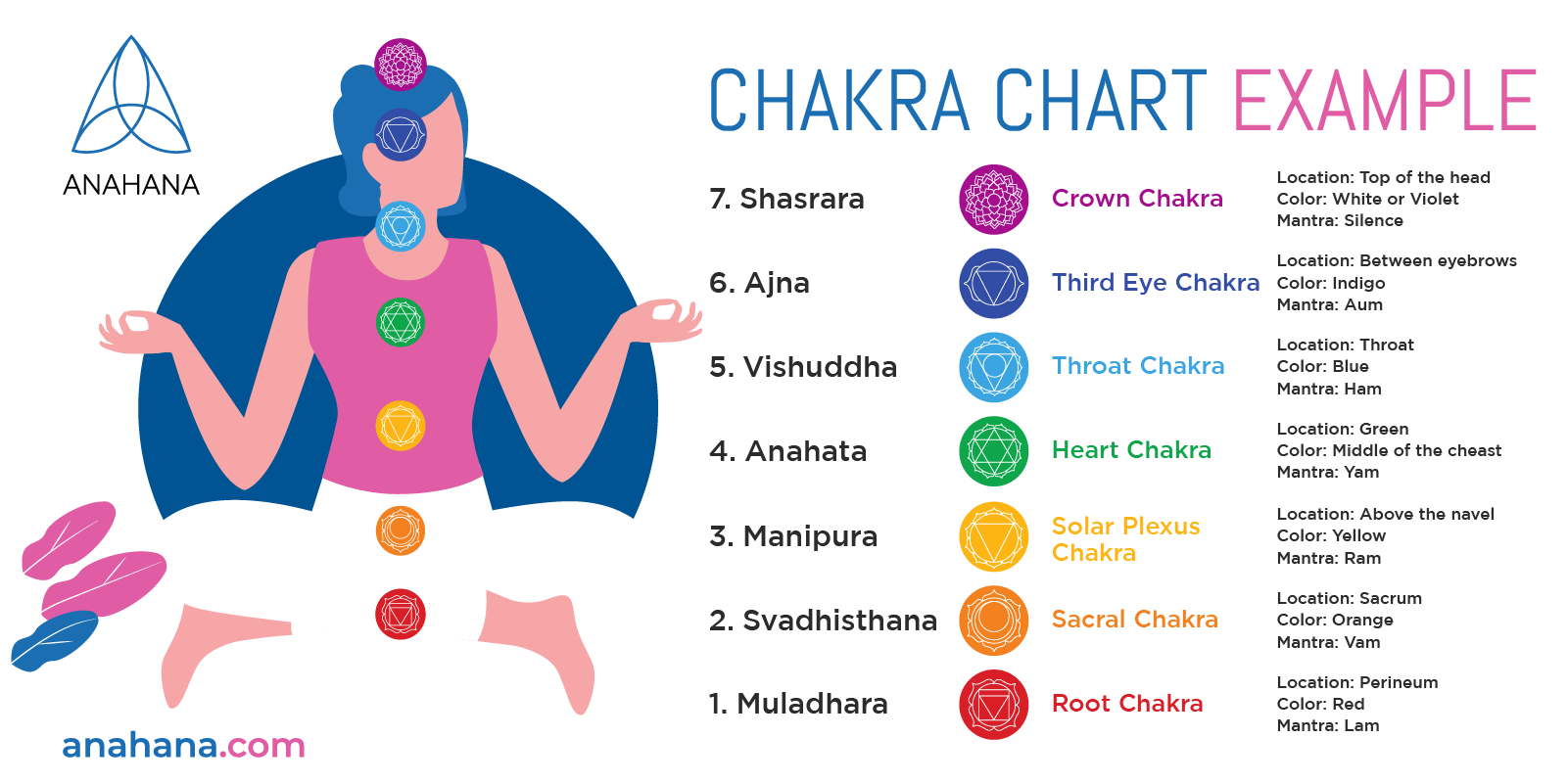
Table of Contents
Discover the transformative power of Chakra Meditation. Learn how to balance your chakras using mindfulness techniques, promoting harmony, mental clarity, and emotional well-being.
Perfect for beginners and seasoned practitioners alike, this guide offers step-by-step instructions and insights into aligning your body's energy centers for a more balanced and fulfilling life.
What is Chakra meditation
Chakra meditation is a form of mindfulness practice that focuses on the seven main energy centers, or chakras, within the body.
Rooted in ancient wisdom, this meditative technique involves deep concentration on these chakras, each of which corresponds to specific physical, emotional, and spiritual aspects of our being.
By engaging in chakra meditation, practitioners aim to balance and harmonize these energy centers, leading to improved overall well-being, heightened awareness, and a deeper sense of inner peace.
This practice not only offers a pathway to greater self-understanding but also fosters a profound connection between the mind, body, and spirit.
Benefits of Chakra Meditation
Chakra meditations are more than just a spiritual practice; it's a catalyst for profound change. By engaging in this meditation, you unlock blocked chakras and reap the benefits of:
-
Enhanced Emotional Intelligence and Balance: Regularly aligning your chakras cultivates emotional stability, reducing feelings of anxiety and depression.
-
Physical Well-being: Aligning your chakras can alleviate physical discomfort, particularly in areas like the spine, neck, and shoulders.
-
Mental Clarity: This meditation clears mental fog, fostering a sharper, more focused mind.
-
Spiritual Growth: Delving into chakra meditation deepens your spiritual connection, leading to a more meaningful and fulfilling life.
-
Increased Energy and Vitality: As your chakras align, you may experience a surge in positive energy and overall vitality.
Where Chakra Meditation Comes From
Chakra meditation, with its profound roots in ancient Indian philosophy, emerged from a deep-seated quest to understand the intricate energy systems of the human body.
The foundational concept of chakras, as detailed in the Vedas, ancient sacred texts of India, dates back to around 1500-500 BCE.
These texts introduced the chakras as vital energy centers, each corresponding to specific physical, emotional, and spiritual aspects of our existence.
Over time, this understanding was further refined in the Upanishads, written between 800-200 BCE, where the chakras were more explicitly described as psychic energy centers, integral to the overall well-being of an individual.
As these spiritual teachings evolved, so did the practices associated with them, leading to the development of guided chakra meditations.
The practice was enriched over centuries, influenced by various spiritual traditions, and eventually integrated into holistic wellbeing approaches worldwide.
This evolution transformed chakra meditation from an ancient philosophical concept into a widely practiced tool for spiritual and emotional healing.
Meditations for Seven Chakras

These meditations focus on aligning and balancing the energy of each corresponding chakra, believed to be essential for harmonizing the mind, body, and spirit.
Here are the meditation for all seven chakras in your body:
Root Chakra (Muladhara)
-
Focus: Earth element, stability, and grounding.
Associated with the chakra symbol, Four-Petaled Lotus. Visualize a rich, red light at the base of your spine. Take a few deep breaths, imagining roots growing from your body into the earth, providing stability and grounding. Envision any blocked energy in this area dissolving, allowing a sense of security and connection to the earth element.
Sacral Chakra (Svadhisthana)
-
Focus: Creativity and emotional balance.
Picture an orange light in your lower abdomen. Breathe deeply into this space, envisioning water flowing freely, symbolizing unblocked, creative energy and emotional harmony.
Solar Plexus Chakra (Manipura)
-
Focus: Personal power and the fire element.
Concentrate on a bright yellow light in your solar plexus area. With each deep breath, imagine the light growing brighter, fueling your inner fire, enhancing confidence and personal power.
Heart Chakra (Anahata)
-
Focus: Love, compassion, and healing.
Focus on a green light in the center of your chest. As you breathe deeply, let this light expand, encompassing a sense of love and compassion for yourself and others. The heart chakra meditation brings a deep sense of connection and inner calm.
Throat Chakra (Vishuddha)
-
Focus: Communication and self-expression.
Visualize a color blue at your throat. With each breath, imagine this blue light clearing any blockages, enhancing clear, truthful, and kind communication.
Third Eye Chakra (Ajna)
-
Focus: Intuition and insight.
Focus on an indigo light in the middle of your forehead. Take deep breaths, inviting clarity, intuition, and insight. Envision this light sharpening your inner vision and guiding your decision-making.
Crown Chakra (Sahasrara)
-
Focus: Spiritual connection and enlightenment.
Imagine a luminous purple light at the top of your head. Breathe into this space, feeling a connection to the universe and a deep sense of spiritual understanding and peace.
Each of these meditations focuses on balancing the energy of the corresponding chakra, using visualization of a spinning wheel, colors and mindful breathing to promote a sense of harmony and well-being.
How to Get Started with Chakra Meditation
Embarking on a journey through the seven chakras with meditation can be a transformative experience. To get started creatively and effectively, consider the following steps:
-
Identify Blocked Chakras: Begin by tuning into your body and emotions to understand which chakras might be blocked. Reflect on areas of your life where you face challenges – be it communication (Throat Chakra), love and relationships (Heart Chakra), or self-confidence (Solar Plexus Chakra). Physical discomforts can also be indicators of blockages.
-
Set an Intention for Each Session: Before you start meditating, set a clear intention for the specific chakra you wish to work on. For example, your intention could be to foster a sense of security for the Root Chakra or to enhance self-expression for the Throat Chakra.
-
Use Guided Chakra Meditations: Especially if you're a beginner, guided meditations can be immensely helpful. These can provide specific instructions and visualizations tailored to each chakra, making the process more structured and easier to follow.
-
Incorporate Chakra Colors and Mantras: Each chakra is associated with a specific chakra color and mantras. Visualizing the respective color during meditation and chanting or listening to the mantra can deepen your practice and help unblock and balance the chakra.
-
Journal Your Experience: After each meditation session, take some time to journal your experience. Note any thoughts, feelings, or physical sensations that arose. This can help you track your progress and gain deeper insights into your chakra health.
-
Combine with Yoga or Physical Activity: Engaging in physical activities, especially yoga, which focuses on aligning and balancing the chakras, can complement your meditation practice.
Remember, chakra meditation is a personal journey. It's about exploring and understanding your inner landscape, so approach it with patience, openness, and curiosity.
Frequently Asked Questions
How are the Chakras activated?
Ideally, your chakras should be open, balanced, aligned, and activated. This means that all your chakras are vibrating at an optimal frequency.
When this occurs, you feel emotionally balanced, secure in your thoughts and feelings, and physically well. It does not mean that your problems will disappear.
However, balanced and activated chakras will help you feel more comfortable dealing with life's challenges.
What is the best meditation hand position?
There are several different mudras you can adopt during meditation.
You can start with a simple beginner hand position called the Dhyana Mudra. Essentially, this hand position has your palms facing up in your lap.
One hand is over the other (right hand over the left), and you can place the tips of your two thumbs together.
How does a blocked chakra feel like?
When a chakra is blocked, it can lead to a range of discomforts and imbalances.
Physically, this might manifest as pain, stiffness, or dysfunction in the body parts associated with that chakra.
Emotionally, a blocked chakra can result in feelings of anxiety, fear, or overwhelm, and mentally, it might cause confusion, indecisiveness, or a sense of being mentally 'stuck'.
References
The Chakra System and Psychotherapy
The effect of chakra meditation on heart chakra
Improving quality of life using compound mind-body therapies
Disclaimer
The contents of this article are provided for informational purposes only and are not intended to substitute for professional medical advice, diagnosis, or treatment. It is always recommended to consult with a qualified healthcare provider before making any health-related changes or if you have any questions or concerns about your health. Anahana is not liable for any errors, omissions, or consequences that may occur from using the information provided.

By: Meriah McCauley
Meriah McCauley is a leading voice in holistic healing, known across North America for her expertise in chakra balancing, spiritual alignment, and energy-based wellness. Her work bridges the art and science of mind-body healing, shaped through years of study, practice, and mentorship. Meriah deepened her understanding of spiritual anatomy and the chakra system under the guidance of her guru, Dr. Don Stapleton, during her immersive training in Costa Rica. She later earned her Master’s degree in Psychology from Columbia University, specializing in Spirituality and the Mind–Body connection, which continues to influence her integrative approach. Today, she supports individuals and practitioners through coaching, yoga teacher trainings, chakra-focused education, and Holotropic Breathwork for personal transformation. Meriah is dedicated to helping others develop emotional clarity, energetic balance, and spiritual resilience—and she remains committed to guiding anyone seeking a deeper, more meaningful connection with themselves.